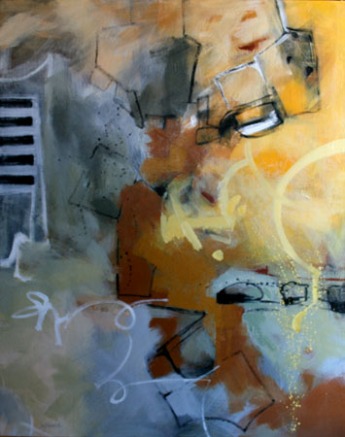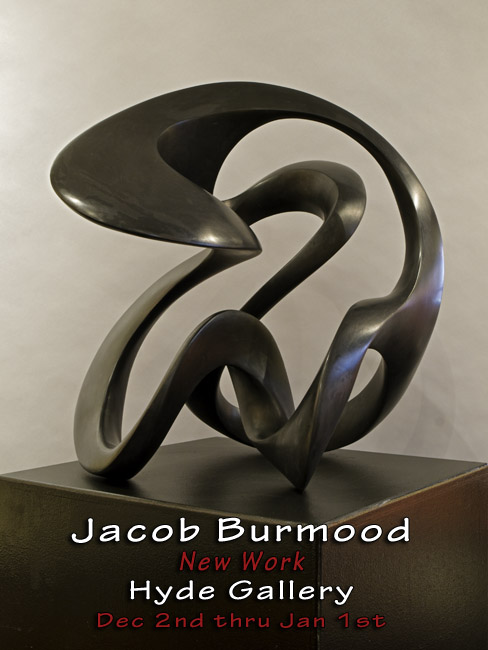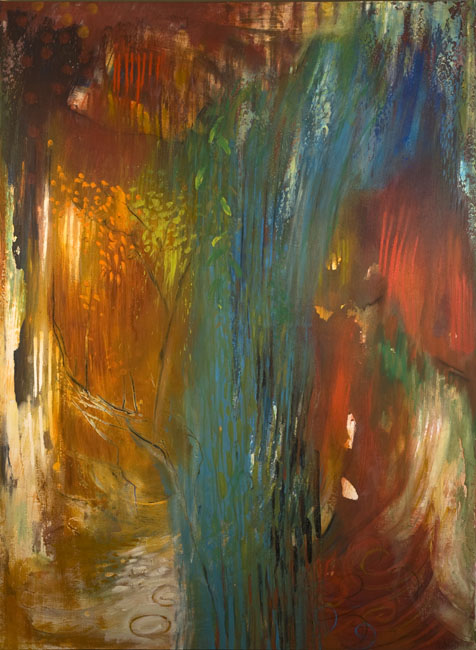We have a wonderful exhibit of Michael McClure impressionist oil landscapes in the gallery through December. Michael’s inspiration comes directly from viewing life in the Plein Air tradition.
Michael McClure Oil Landscapes
Posted: November 14, 2012 by janhyde in UncategorizedTags: Plein Air Painting
First Friday Artwalk, Dec 2, 2011
Posted: November 30, 2011 by James in Jacob BurmoodTags: Art, First Friday, Hyde Gallery, Jacob Burmood, Jan Hyde, Missouri, Sculpture, Springfield
Jacob Burmood is a graduate of Missouri State University with a Bachelor of Fine Arts Degree and emphasis in sculpture.
Since childhood Burmood has had a strong desire to carve and construct three-dimensional forms, which led to the pursuit of a degree in sculpture. Since graduation, the artist has continued developing these forms, as well as teaching art foundations courses at the Missouri State University. Jacob Burmood is currently in the MFA program at KU to continue his education.
”My intention for each sculpture is to create a calm yet dynamic form, one that looks like it is undergoing a painless evolution. The reason I make these is because I believe it is healthy to explore form with certain guidelines and principles of art, such as balance and harmony. Through this process I feel better equipped to translate these principles to my daily life with the philosophy developed through this exploration.” I’m inspired by the work of Henry Moore, Jackson Pollock, and the Art Nouveau movement. I’m drawn to the Futurists sense of movement and Constantine Brancusi”s philosophy of it.”
December 3-January 1
Why does art cost so much? Well told by a thoughtful artist:
Posted: June 1, 2011 by janhyde in UncategorizedA gallery I work with called recently and recounted about a potential client, loved your work, blah, blah, blah…but… They would like a discount on the price, 10%. Is that possible?
Anything is possible and this got me thinking how little is known about the outrageous prices we artists have the gall to charge. I offer a hypothetical to explain away some of the confusion.
You visit the city and decide to take in a few art galleries before dinner. You walk around the first gallery, admire the work and see a small framed painting that catches your eye. A quick perusal of the price list and…what! $850 for an oil painting 12×12 inches and barely 14×14 with the frame? You walk out shaking your head wondering how you could charge so much for something so small.
That next day, your car decides that the trip to the city and all the requisite potholes were too much. Clunk and you’re stuck on the side of the road. As the tow truck lifts your car you are pretty sure the sound of the clinking chains bears an eerie resemblance to the sound of money leaving your pocket. “Transmission’s hurting” says your mechanic. “$415 in parts and 5 hours labor @ $87 per hour comes to… $850.”
You pay, because what else can you do?
OK, buying art and getting your car fixed aren’t really the same things but a few parallels are apt to explore.
Car parts certainly cost more than art parts. That 12×12 painting probably breaks down roughly and thusly;
Canvas – $20
Paint – $10
Frame – $60 (no assembly, just the frame)
Your total cost of materials so far is about $90 without a single brush mark painted or hanging wire attached.
Now we go to the labor costs and if we follow our mechanic analogy and assume an artist’s time is worth at least that of a mechanics (I am in no way disparaging mechanics whose jobs are very difficult but I also believe something as rigorous and specialized as making art deserves at least equal consideration.) The slippery part comes in figuring how much time a painting takes to make (that is the industry standard first question you are asked by fellow artists and public alike – “how long did it take?”) and the answer is…it depends.
What kind of painting is it? Is it a highly precise image (slower) or something more loose (faster.) As a younger artist I often made many more poor choices that needed a lot of rectifying and time spent. As an older artist my process is a little more efficient and faster. You also rarely work on a single piece from start to finish with a stopwatch in hand so we are faced with a best educated guess. Roughly 8 hours, start to finish seems reasonable for a 12×12 painting.
Back to our analogy and we find our labor costs at $87 per hour x 8 hours = $696
Plus, we need an hour or so for touch up and assembly of the frame with the painting (bring an unframed painting to a frame shop and just try to walk out without spending at least $100) so we can add, say $50 of framing labor to our cost.
Our total cost of the painting now sits at $836 which is an odd price to display so we rounded up to $850 for good measure.
Now comes the tricky part. The gallery will take 50% of the price that it sells for (pretty typical industry standard.) so your return just went down to a meager $425. In addition, we are in a bad economy and as a mid career artist, the cache of your name and art isn’t high enough to allow you to raise your price well beyond that $850 mark so you and the gallery figure $850 to be a reasonable price. (In defense of galleries and their commission; they market your work, rent a spot in high trafficked areas and serve as free museums for the public with nearly 12 new shows a year. The job they do is just as tough with much more overhead than your typical artist so they generally earn the commission.)
If and when your piece sells you will be cut a check for $425 minus an immediate $90 for those fixed supply costs and you are left with $335. For good measure let’s round to $300 in thinking of studio rent, utilities, marketing, etc and because those hidden costs don’t hide on the first of the month.
So, for a conservative 9 hours of work you made $300. Not quite the $87 an hour your mechanic makes as it actually breaks down to only $33 per hour. Still, $300 a day would come out to about $70,000 a year! Fantastic! If…you… make… a painting… a day… that can sell for $850 each… and you sell every single piece you make… then and only then will you make such a nice living.
At the end of the day, making art becomes a labor of love plain and simple. Those 8 hours you’ve “allotted” for your piece might easily turn to 16 or 20 or more as the dictates of a creative process demand. You rarely think financially when you are making the work and you do your best when it is finished to find a reasonable price that covers both time and materials with some equity. What is interesting is when you compare the relative cost of art to other professions and think of the benefit versus cost… Let’s just say, the art will last a lifetime and the rebuilt transmission… until the next pothole!
TIPS ON ART COLLECTING
Ten things to remember when starting to collect art!
Tips for beginning art collectors as well as for experienced art collectors.
Good reminders for anyone interested in art or already collecting art.
- Buy art because you like it and because it moves you, and because it will
enhance your life. - Visit as many art galleries as you can, gallery staff can be helpful guides in
your art education. - Get on gallery mailing lists so you’ll be invited to openings and special events.
- Visit and join your local art museums and non profit art centers.
Curators sometimes give lectures on collecting art. - Attend National and International Art Fairs and Art Expos whenever possible.
- If you know art collectors, talk to them and find out what they know and what
they’ve learned about collecting art. - Read books on art history and books about collecting art.
- Subscribe to a few art magazines.
- Read reviews by local and national art critics, keeping in mind that reviews
usually just reflect one persons opinion. - Working with a professional art advisor / art consultant is a good way to learn
about art collecting, and they will guide you through the process of purchasing art. - Once you’ve educated yourself and have fallen in love with a work of art,
buy it, take it home and enjoy it.
Gary Bowling, painter
Posted: May 26, 2011 by janhyde in Gary BowlingTags: Art, Gary Bowling, Hyde Gallery, Impressionism, Jan Hyde, Midwest, Missouri, Ozark, Paintings, Springfield
The Yoga Paintings of Jan Hyde
Posted: May 12, 2011 by janhyde in Jan HydeTags: Bikram Yoga, Gallery, Hot Yoga, Hyde Gallery, Jan Hyde, Missouri, Ozark, Paintings, Springfield
Jan Hyde
I’m hooked on the challenge of sumit yoga!
The most profound benefit of sumit yoga for me has been a natural relaxing into my life. Obstacles are not so scary. I am more fluid, more curious, and at the same time more patient.
Concentrating on poses clears and quiets the mind. I have never felt so balance in my day-to-day life.
I have only been in practice four months. I can only image how I will feel after the first year!














